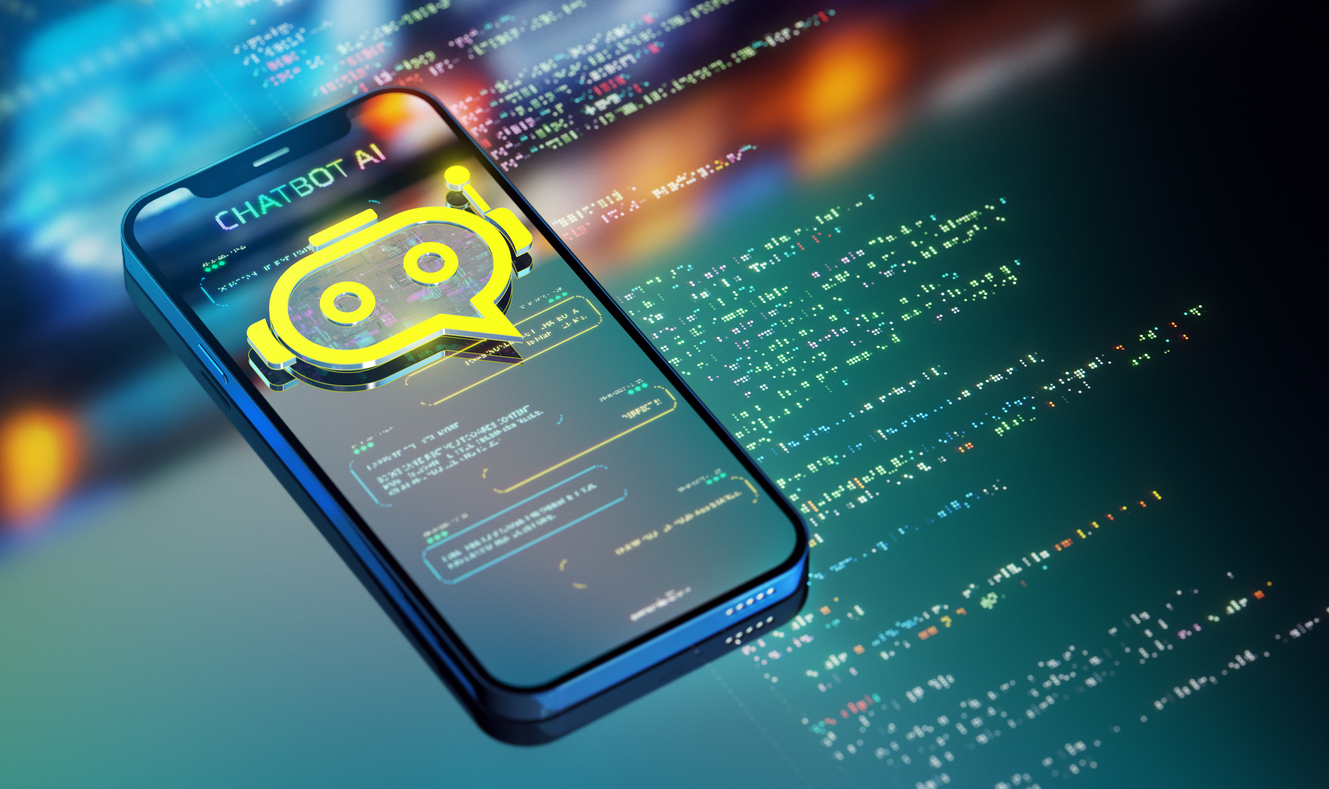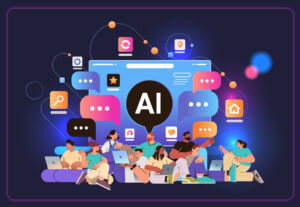AI for communicators: What’s new and notable
Including a major lawsuit from the New York Times and why this may be the year of copyright.

A new year brings a glut of new prediction stories, and, wouldn’t you know it, more predictions on how AI will impact our work and lives. Of course, the newest developments in AI aren’t all looking forward— there’s much happening right now that you’ll want to keep up with, too.
One item to especially keep an eye on in 2024 is copyright. Whether we’re talking about the rights of content owners who are being used to train large language models (LLMs) or iconic characters entering the public domain, we may all quickly try to become legal experts as this obscure form of law takes center stage.
Here are some of the biggest stories from the last two weeks – and what they mean for communicators.
Risks and regulation
While many of us were on holiday break, the New York Times sued OpenAI and Microsoft, claiming that millions of articles from the publication were used to train AI chatbot LLMs without authorization. This makes the legacy outlet one of the first major American media organizations to sue the companies over copyright issues with its written works.
The Times also claims that the articles used to train ChatGPT make the chatbots a competitor to the Times as a source of reliable information.
According to an article on the lawsuit:
The suit does not include an exact monetary demand. But it says the defendants should be held responsible for “billions of dollars in statutory and actual damages” related to the “unlawful copying and use of The Times’s uniquely valuable works.” It also calls for the companies to destroy any chatbot models and training data that use copyrighted material from The Times.
In its complaint, The Times said it approached Microsoft and OpenAI in April to raise concerns about the use of its intellectual property and explore “an amicable resolution,” possibly involving a commercial agreement and “technological guardrails” around generative A.I. products. But it said the talks had not produced a resolution.
Between the lack of monetary demand and its focus on setting up guardrails, the Times positions itself as an influential advocate for reform and regulation.
No wonder Axios is calling copyright law “AI’s 2024 battlefield”. The article draws a tether between the Times lawsuit and last year’s array of authors, led by comedian Sarah Silverman, who also sued OpenAI for using their copyrighted work in its learning models.
“The copyright decisions coming down the pike — over both the use of copyrighted material in the development of AI systems and also the status of works that are created by or with the help of AI — are crucial to the technology’s future and could determine winners and losers in the market,” writes Axios.
Reuters agrees and, in a piece recapping the copyright cases filed so far, outlines its own suit against information services company Ross Intelligence, which Thomson Reuters alleges illegally copied thousands of notes from the publisher’s legal platform to train an AI-based search engine.
The piece also suggests that licensing is a potential next step:
“Licensing the copyrighted materials to train their LLMs may be expensive — and indeed it should be given the enormous part of the value of any LLM that is attributable to professionally created texts,” writers trade group The Authors Guild told the copyright office.
While lawsuits tend to move at a glacial pace, any potential decision could greatly impact the ability of enterprise-level AI chatbots to effectively mine copyrighted work–and offer the same quality of outputs you and your teams have gotten used to. Any potential budget or planned spend for AI technology should be applied sparingly, and perhaps on a monthly subscription basis, with the understanding that future rulings have the potential to impact the functionality of these tools.
Tools and uses
2024 is also shaping up to be the year of copyright for another reason – the entry of the earliest version of Mickey Mouse on January 1.
And already “Steamboat Willie” Mickey Mouse is colliding with AI.
At least one model has already been trained on images from the 1928 Disney short, allowing users to twist Mickey Mouse to their own ends, as Ars Technica reported. There were ways to incorporate Mickey into AI content before, of course, but now there’s the fact that it’s legal (restrictions apply, read more here).
With every passing year, more and more iconic content will pass into the public domain, presenting brand management challenges for the creators and chances for creativity from the rest of us. As always, tread with caution in the rapidly evolving legal landscape.
While communicators are often focused on generative AI for its ability to help us create both written and visual content, AI is being used for its ability to crunch and draw conclusions from vast troves of data in a variety of areas. But one particularly urgent need is to help in the fight against climate change.
NPR reports that AI is helping scientists identify methane emissions, detect and prevent forest fires like a high-tech Smokey Bear, and even find new sites to mine for the minerals used in green-climate tech like solar panels.
It’s all a vivid reminder that the kind of AI communicators use is just the tip of the (rapidly melting) iceberg. Find out how your organization is using AI outside your department. You might find fascinating new stories to share – or new ideas for using the tech in your own workflow.
Speaking of, it’s now getting easier to use generative AI no matter where you are. Copilot, the AI tool integrated directly into the Microsoft Office suite of tools, is now available on both iPhone and iPad. As ZDNet reported, you can download the app and then use either voice or text to boss around your robot assistant. Copilot will even read its response back to you aloud. This can help you quickly draft simple emails on the go, summarize text and even create visuals with DALL-E 3.
AI is fast becoming embedded in day-to-day life, just as search engines are.
AI at work
In addition to changing how we work, AI is also fast altering how we get hired and even what kinds of jobs are available.
Wired posted a Q&A with Hilke Schellmann, an NYU journalism professor and author of “The Algorithm” about how AI is being used in the hiring process. Naturally, that brings a number of challenges for applicants when a machine is doing the sorting rather than a human. In particular, bias continues to be an issue – often perpetuating the human biases of the past with even more efficient methods of (often inadvertent) discrimination:
“In one case, a résumé screener was trained on the résumés of people who had worked at the company. It looked at statistical patterns and found that people who had the words “baseball” and “basketball” on their résumé were successful, so they got a couple of extra points. And people who had the word “softball” on their résumé were downgraded. And obviously, in the US, people with “baseball” on their résumé are usually men, and folks who put “softball” are usually women.”
Schellmann also pointed out that in many cases, companies themselves don’t even know how they algorithms work, making it hard to defend themselves against accusations of bias in court, whether or not they’re true.
But he also said this same technology can be empowering for job seekers who use generative AI to improve resumes, cover letters and prep for interviews. As always, the technology is not the enemy. It’s how we use it that matters.
AI is also becoming a job field in and of itself. Business Insider details several ways that workers are transitioning into full-time AI work, in a variety of ways. Of course, there’s an increased need for the people who create and code LLMs themselves. But there are also a rising number of people going into business as AI consultants, helping others learn to use the tools, or even influencers who make most of their money from social media content explaining the new tech.
But even if you’re not interested in making AI your whole job, you can still profit, according to Justin Fineberg, a former product manager turned AI startup CEO. Just become the person at your company who’s great at using AI – and who can help others.
“Every company right now wants to implement AI,” Fineberg told Business Insider. “And you’d honestly probably get a promotion.”
What trends and news are you tracking in the AI space? What would you like to see covered in our biweekly AI roundups, which are 100% written by humans? Let us know in the comments!
Allison Carter is editor-in-chief of PR Daily. Follow her on Twitter or LinkedIn.
Justin Joffe is the editorial director and editor-in-chief at Ragan Communications.






